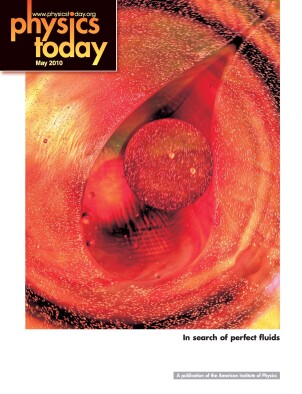Tuning physics in the US
DOI: 10.1063/1.3431324
Taking a page from the education reforms in Europe, groups around the world have been exploring tuning as a tool for making university programs more relevant and transparent. In the US, physics was one of two fields Utah began tuning last year.
Utah’s nine publicly funded colleges and universities took part in a tuning pilot project that included schools in Minnesota and Indiana. With $150 000 apiece from the Lumina Foundation for Education, each participating state picked two or three fields to tune; the exercise is part of the nonprofit, Indiana-based foundation’s goal of upping the percentage of people in the US who earn a college degree from around 40% now to 60% by 2025.
Says Lumina program director Kevin Corcoran, “The Achilles heel of higher education is that people cannot describe what degrees mean without using credit hours.” Tuning is a faculty-driven process that aims to spell out—for prospective students, their parents, faculty, potential employers, and policymakers—the competences of a graduate: What skills does a bachelor of physics have? A master?
“Even with a relatively consistent physics curriculum, there are significant variations in how well the major learning outcomes are achieved,” says retired physicist William Evenson, the Utah System of Higher Education consultant who led the state’s physics tuning panel. The panel’s student representative, Jeff Hodges, who is in his first year of PhD work at the University of Utah, says, “It shocks me to be in graduate school with people who do not have any [upper-division] E&M under their belt.” In the tuning process, he says, “we focused on defining degree programs. How do you tell a teacher what a student needs to know, without telling them how to teach? We came up with skill sets.”
Guided by input from students, alumni, faculty, and private-sector employers, the academic panel developed a list of dozens of skills. For starters, the list says a physics bachelor should have an understanding of the role of evidence, of cause and effect, of experiment, of scientific ethics, of science as a community effort. A bachelor should have estimation skills, understand simple models, practice laboratory safety, be able to carry out error analysis, and be able to present an informal talk on a lab experiment or class project.
“It is realistic to expect students to accomplish a certain level by a certain degree,” says Evenson. “We are not saying what the curriculum should be or how you get those competences. We recognize that every institution has a different set of students, a different mission. So every institution will have their own take on how to achieve these outcomes.” In addition to transparency, he says, “tuning focuses a lot on accountability.”
But Brad Carroll, a panel member from Weber State University in Ogden, says, “Ultimately, it is about curriculum. If you find that businesses say they want people who work well in teams, we might restructure lab courses. If we find out that they need more electronics, we might change what we teach.” Each faculty panel member, he says, will take results from the tuning process back to their own department, “and we may make curricular changes.”
The Utah tuning panel members are now advising the Texas Higher Education Coordinating Board, which, as part of a $1.8 million grant over four years from Lumina, is launching tuning in four engineering fields. One aim in Texas is for students to be able to more easily transfer among institutions, says Mary E. Smith, the board’s assistant deputy commissioner for academic planning and policy. “We have lots of swirling students that take classes all over the place.” The hope behind Texas’s tuning effort, she says, “is to get more students to successfully graduate from engineering programs in our state. Our data show that Texas is not meeting its targets for graduating STEM [science, technology, engineering, and math] students. Tuning is part of [our plan for] closing the gap by 2015.”
More about the Authors
Toni Feder. American Center for Physics, One Physics Ellipse, College Park, Maryland 20740-3842, US . tfeder@aip.org
